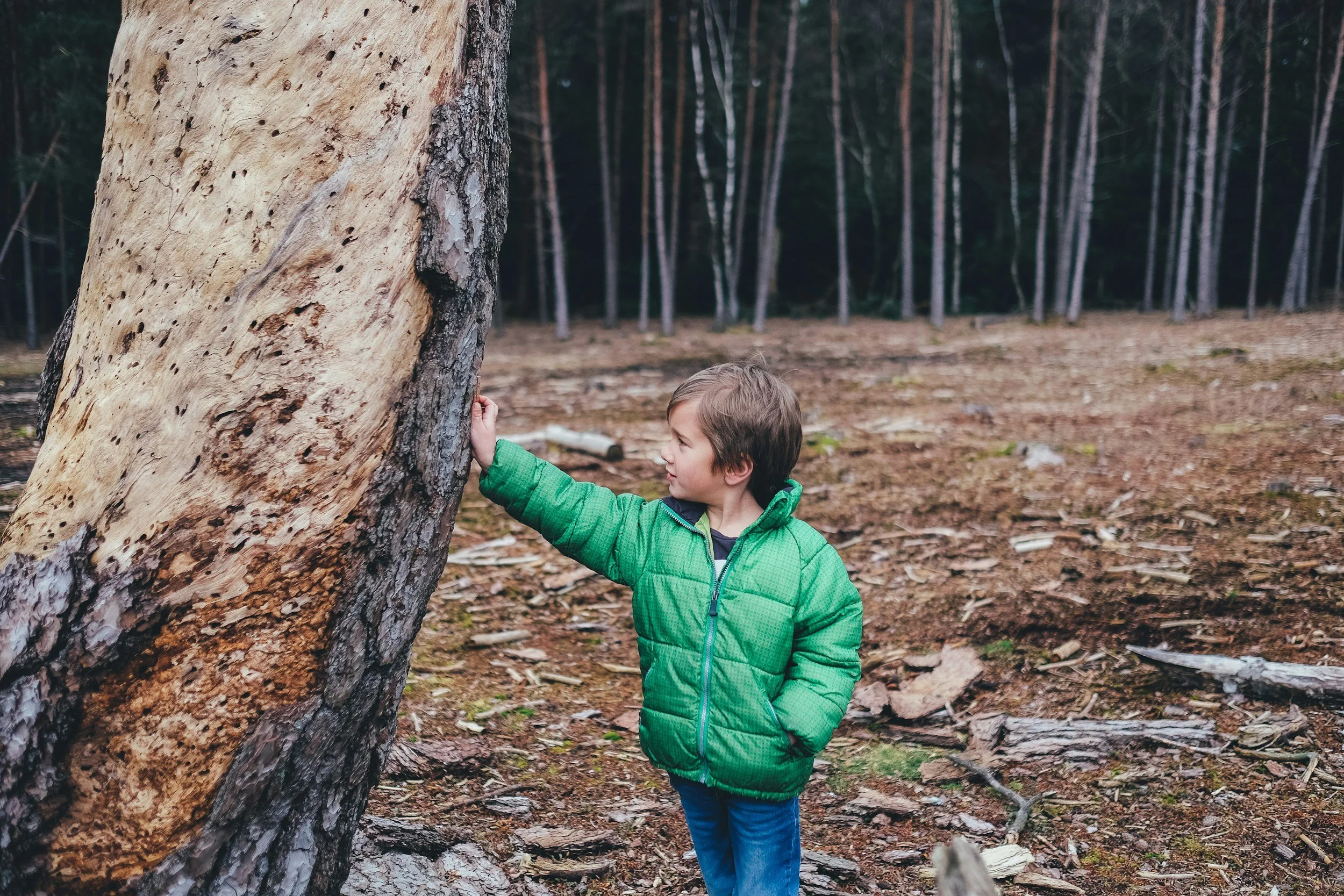Book Summary: The Giving Tree by Shel Silverstein
By Lily | Published 12 June 2023 | Book titles and covers are affiliate links.
The Giving Tree, written and illustrated by Shel Silverstein, tells the story of a young boy and an apple tree who are friends.
The Giving Tree is a heartwarming tale of selfless love and the importance of cherishing the little things in life. The tender story teaches us about the power of unconditional love and the sacrifices that parents make for their children.
The story is a poignant and moving tale about love, sacrifice, and the importance of appreciating the things we have in life. The picture book is told through a series of interactions between the little boy and the tree over the course of the boy's lifetime.
This article provides a summary of the book, its themes, and its impact on readers of all ages.
The Story of The Giving Tree
The story begins with a young boy who loves to play in the shade of an apple tree. The tree is happy to provide the boy with apples to eat and branches to swing on. The boy enjoys spending time with the tree, and they develop a deep friendship.
As the boy grows older, he spends less time with the tree and his needs and desires change. He wants to buy things and have money to spend. The tree, being selfless and wanting to make the boy happy, gives him her apples to sell. The boy is pleased with the money he earns, and he does not return to the tree for a long time.
As the boy continues to grow, he becomes more and more selfish, taking more and more from the tree without giving anything back in return. He has taken its apples, branches, and eventually, the trunk until there is nothing left and the tree is reduced to a stump. Each time, the boy leaves and does not return for a long time.
Years pass and the boy returns to the tree once again. He is now an old man who seeks a quiet place to rest. The tree offers her trunk to the old man, who sits on it and is content. The book ends with the poor tree being nothing more than an old stump, and the boy now an old man, sitting on it.
The Themes in The Giving Tree
The Giving Tree is a story about unconditional love, selflessness, and the importance of cherishing the little things in life. The tree represents a parent's unconditional love for their child, always providing for them and putting their needs before their own. The boy's progression throughout the story represents the natural progression of life, from childhood to old age, and the importance of cherishing each stage along the way.
1. Unconditional Love:
The tree represents selfless love. Throughout the progression of the story, the tree friend shows unconditional love and selfless giving towards the boy. Even when the boy takes more and more from the tree, the tree remains happy to provide for him without expecting anything in return. Despite the boy's changing desires and long absences, the tree remains devoted to him.
2. Selfless Giving:
The tree gives everything she has to the boy, without expecting anything in return. The boy takes everything the tree has to offer, without realizing the cost of his desires. The tree's love for the boy is a moving parable for the natural world and the daily basis on which it provides for human beings.
3. Serene Acceptance:
The tree in "The Giving Tree" accepts her fate, even when she is reduced to nothing more than an old stump. The tree's selfless love and serene acceptance of the boy's desires are a cautionary tale about abusive relationships and the cost of giving too much.
4. Cautionary Tale:
The Giving Tree can be seen as a cautionary tale about giving too much and losing oneself in the process. The tree gives and gives, even when it is not in her best interest, and the boy takes and takes, without showing gratitude or appreciation. The tree's transformation from a tall, proud tree to a stump is a poignant symbol of the cost of giving too much and losing oneself in the process. The book can be used as a tool for parents and educators to discuss the importance of boundaries in relationships and the dangers of codependency. It is a poignant reminder of the importance of self-care and the value of setting limits in relationships.
5. Relationships:
Another theme in the book is the progression of the story from the beginning of the boy's life to his old age. The story follows the boy's desires and needs throughout his life, and the tree friend is always there to support him. The story is a reminder of the importance of appreciating the people and things we have in our lives, and of the inevitability of change and loss.
6. The Natural World:
The book also explores the relationship between human beings and the natural world. The tree friend is a symbol of the natural world, and her unconditional love for the boy is a reminder of the beauty and value of the natural world. The book is a cautionary tale of the dangers of taking nature for granted and the importance of respecting and appreciating the natural world.
Figurative Language in The Giving Tree
The Giving Tree is written in free verse, with figurative language used throughout the book. Figurative language refers to the use of words and expressions in a non-literal way to create a vivid or imaginative picture in the reader's mind. It is often used to describe something in a way that is more interesting or expressive than a literal description.
The book is full of rich language and imagery that adds depth and meaning to the story, and it is a great example of how figurative language can be used to create a powerful and memorable reading experience. Here are just a few examples of the figurative language used in The Giving Tree.
1. "And the tree was happy"
This line appears multiple times throughout the book, and it is an example of personification. Personification gives human qualities to non-human things, such as animals or objects. In this book, the tree is given human emotions, which helps to emphasize the depth of her love for the boy.
2. "And the tree was often alone"
This line is an example of anthropomorphism, which is when animals or objects are given human-like qualities, such as feelings or behaviors. This helps us understand them better because we can relate to them more easily. In this case, the tree is given the human experience of loneliness, which helps to emphasize the cost of the boy's requests.
3. "And the tree was glad"
This line is another example of personification, as the tree is given the human emotion of happiness. The use of this language helps to emphasize the joy that the tree feels in giving to the boy.
4. "And the tree was happy... but not really"
This line is an example of irony, as the tree's happiness is contrasted with the reality of her sacrifice. The use of this language highlights the cost of the boy's requests and the tree's selflessness.
5. "And the tree was happy... but not really, and the boy was happy... but not really"
This line is an example of parallelism, as the structure of the sentence is repeated with different subjects. The use of this language draws a comparison between the tree and the boy and emphasizes the idea that their happiness is not as complete as it may seem.
6. "And the tree was a stump"
This line is an example of metaphor, which is when we compare two things that are seemingly unrelated, but share some common characteristics. The line in which the tree is compared to a stump emphasizes the finality of the tree's sacrifice and the cost of the boy's desires.
The Giving Tree as a Children's Book
The book is a great example of how children's books can be both entertaining and meaningful, and it is a testament to the power of storytelling to transform our lives and the lives of those around us. The book's free verse and natural language make it accessible to young readers, while its deeper themes and figurative language make it a meaningful and thought-provoking read for adults.
The Giving Tree is a great book for young children because it teaches them about unconditional parental love. The story also shows the importance of appreciating the little things in life and the beauty of nature.
The book can also be used as a tool for parents and educators to discuss the importance of boundaries in relationships and the dangers of codependency. It is a poignant reminder of the importance of self-care and the value of setting limits in relationships.
The book has been translated into numerous languages and has been enjoyed by generations of young readers around the world. It is a versatile book that can be read to young children or used as a tool for teaching figurative language to older children.
Other Works by the Versatile Shel Silverstein
Shel Silverstein was a prolific writer and illustrator of children's books and picture books. His self-illustrated picture books have become classics in children's literature due to their timeless themes, imaginative storytelling, and distinctive artwork.
Silverstein's books are known for their use of figurative language, playful tone, and whimsical illustrations. His other works include "Where the Sidewalk Ends," "A Light in the Attic," and "Runny Babbit: A Billy Sook." His works have been celebrated around the world for their ability to captivate young readers and stimulate their imaginations.
Final Thoughts
Shel Silverstein’s The Giving Tree has been loved by readers of all ages since it was first published in 1964 by Simon & Schuster, and remains one of the best children's book of all time.
This beautiful and touching story will also stay with you long after you've finished reading it. The book's themes of unconditional love, selfless giving, and the importance of appreciating the things we have in life are timeless and universal, and they are sure to resonate with readers of all ages.
Silverstein's use of figurative language and his ability to capture the imaginations of young readers with his whimsical illustrations make The Giving Tree a timeless classic that will continue to be enjoyed by generations to come.
It is a must-read for anyone who loves children's books and wants to experience the power of a story that teaches the importance of unconditional love and selfless giving.





